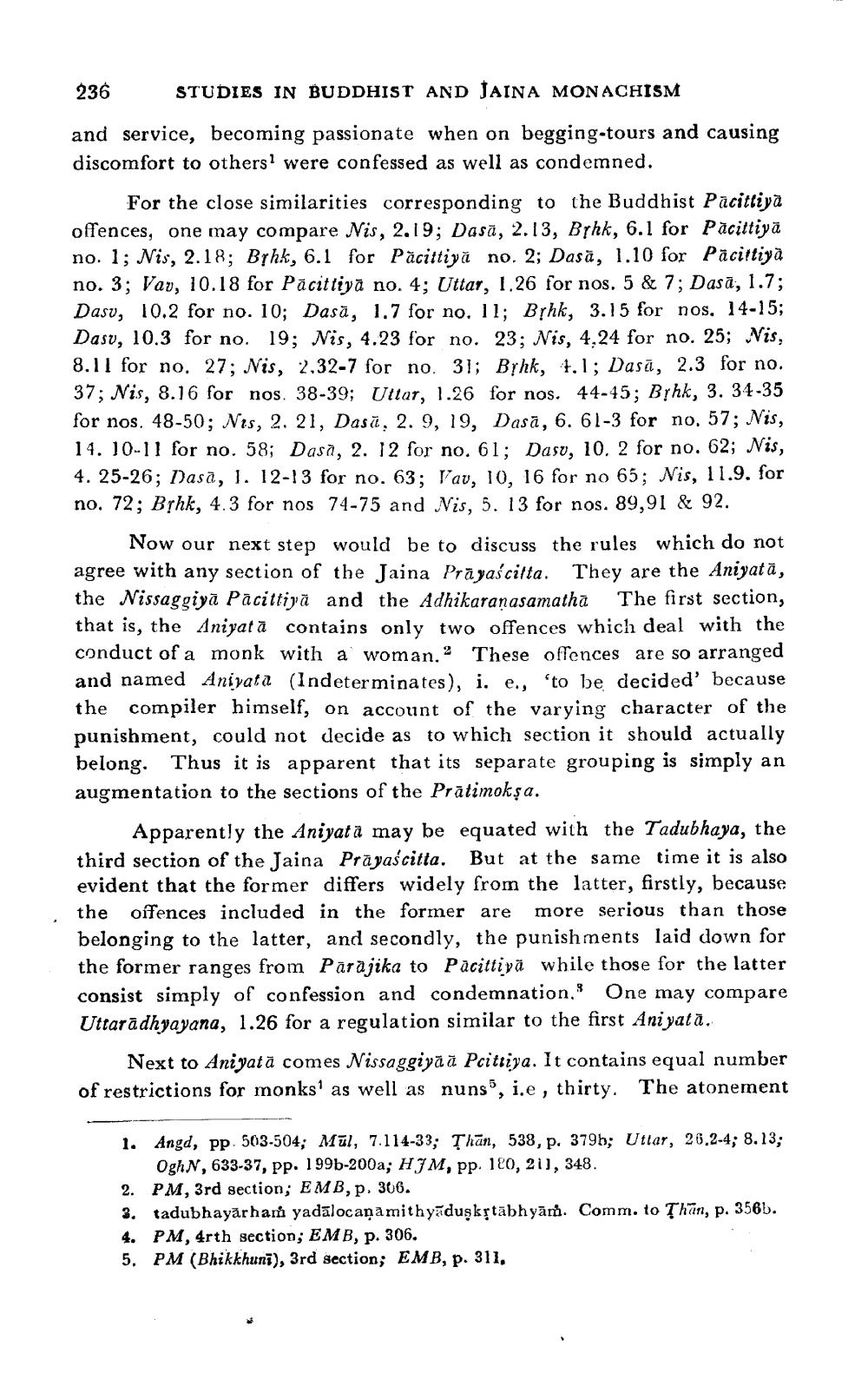________________
236
STUDIES IN BUDDHIST AND JAINA MONACHISM
and service, becoming passionate when on begging-tours and causing discomfort to others1 were confessed as well as condemned.
For the close similarities corresponding to the Buddhist Pacittiya offences, one may compare Nis, 2.19; Dasă, 2.13, Brhk, 6.1 for Pacittiya no. 1; Nis, 2.18; Brhk, 6.1 for Pacittiya no. 2; Dasă, 1.10 for Pacittiya no. 3; Vav, 10.18 for Pacittiya no. 4; Uttar, 1.26 for nos. 5 & 7; Dasă, 1.7; Dasv, 10.2 for no. 10; Dasă, 1.7 for no. 11; Brhk, 3.15 for nos. 14-15; Dasv, 10.3 for no. 19; Nis, 4.23 for no. 23; Nis, 4,24 for no. 25; Nis, 8.11 for no. 27; Nis, 2.32-7 for no. 31; Brhk, 4.1; Dasā, 2.3 for no. 37; Nis, 8.16 for nos. 38-39; Uttar, 1.26 for nos. 44-45; Brhk, 3. 34-35 for nos. 48-50; Nts, 2. 21, Dasa, 2. 9, 19, Dasa, 6. 61-3 for no. 57; Nis, 14. 10-11 for no. 58; Dasa, 2. 12 for no. 61; Dasv, 10. 2 for no. 62; Nis, 4. 25-26; Dasa, 1. 12-13 for no. 63; lav, 10, 16 for no 65; Nis, 11.9. for no. 72; Brhk, 4.3 for nos 74-75 and Nis, 5. 13 for nos. 89,91 & 92. Now our next step would be to discuss the rules which do not agree with any section of the Jaina Prayaścitta. They are the Aniyatā, the Nissaggiya Pacittiya and the Adhikaraṇasamathā The first section, that is, the Aniyata contains only two offences which deal with the conduct of a monk with a woman. 2 These offences are so arranged and named Aniyata (Indeterminates), i. e., 'to be decided' because the compiler himself, on account of the varying character of the punishment, could not decide as to which section it should actually belong. Thus it is apparent that its separate grouping is simply an augmentation to the sections of the Pratimokşa.
Apparently the Aniyata may be equated with the Tadubhaya, the third section of the Jaina Prayaścitta. But at the same time it is also evident that the former differs widely from the latter, firstly, because the offences included in the former are more serious than those belonging to the latter, and secondly, the punishments laid down for the former ranges from Parajika to Pacittiya while those for the latter consist simply of confession and condemnation." One may compare Uttaradhyayana, 1.26 for a regulation similar to the first Anipată.
Next to Aniyată comes Nissaggiyaa Peittiya. It contains equal number of restrictions for monks' as well as nuns, i.e, thirty. The atonement
1. Angd, pp. 503-504; Mul, 7.114-33; Than, 538, p. 379b; Uttar, 26.2-4; 8.13; OghN, 633-37, pp. 199b-200a; HJM, pp. 120, 211, 348.
2. PM, 3rd section; EMB, p. 306.
3. tadubhayarham yadalocaṇamithyaduskṛtābhyam. Comm. to Than, p. 356b.
4. PM, 4rth section; EMB, p. 306.
5. PM (Bhikkhunī), 3rd section; EMB, p. 311,




